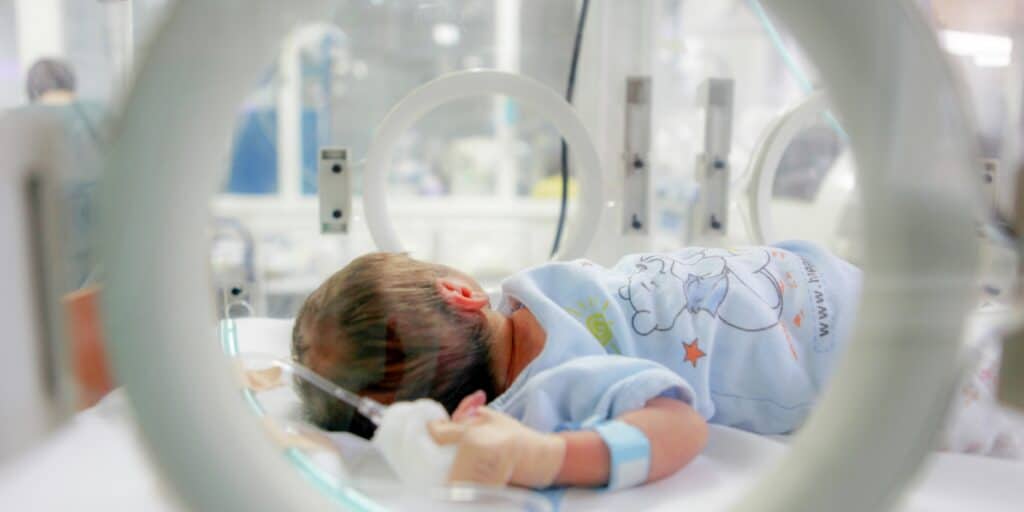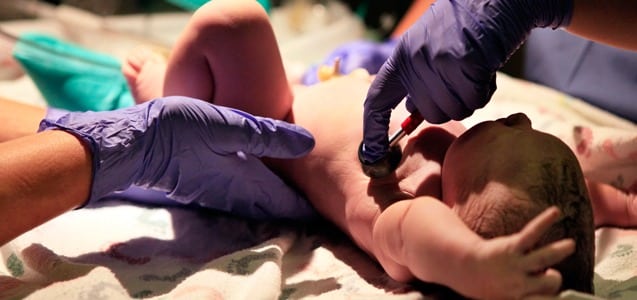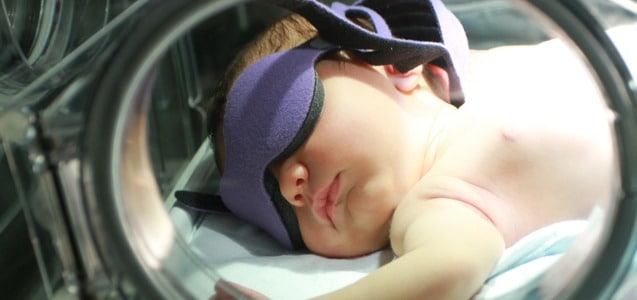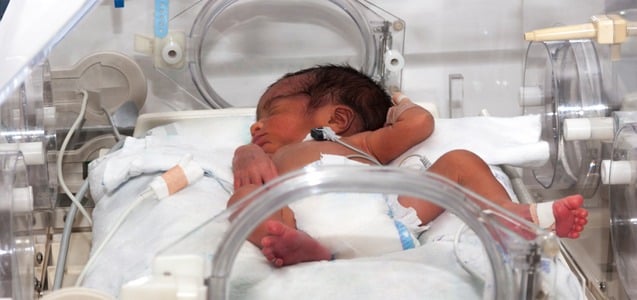Studies show Necrotizing Enterocolitis afflicts premature babies who are fed “cow’s milk-based formula” like Enfamil and Similac. In most cases, baby or infant formula is a safe alternative to breastmilk for newborn babies as long as standard guidelines and feeding practices are used.
The United States Food and Drug Administration (FDA) website hosts a comprehensive report on infant formulas that includes approved manufacturers and individual products. It also highlights the best practices for feeding formula to a baby.
However, one major issue, specifically regarding cow’s milk baby formula, is when a baby is born prematurely. Do not use cow’s milk baby formula to feed your preemie due to the risk of developing NEC.
Why Premature Infants Should Avoid Cow’s Milk Formula
According to most modern studies and evidence, premature babies should not be fed cow’s milk baby formula. Furthermore, a 2020 study by the National Institute of Health’s (NIH) National Library of Medicine found that even milk-based fortifiers in conjunction with a base breastmilk diet negatively impacted premature infants’ health.
The consensus and evidence regarding the use of cow’s milk baby formula on premature babies are pretty clear. It often results in the development of necrotizing enterocolitis (NEC), a severe and potentially deadly condition.
If your premature baby was diagnosed with necrotizing enterocolitis (NEC), you may have a case if your baby was fed a cow’s milk formula. The experienced birth injury lawyers at The Yost Legal Group are here to help you and hold the manufacturers accountable for their negligence.
What are premature birth risks, and how can They be identified?
People frequently talk about human pregnancy in terms of months and say that it lasts about nine months. However, doctors and other medical professionals talk about human pregnancies in terms of weeks.
The average length of a full-term human pregnancy is 40 weeks, which is a little longer than just “nine months.” However, as long as the pregnancy lasts at least 37 weeks, it is still considered a “full-term pregnancy.”
Anything under 37 weeks is considered a “premature birth,” i.e., the baby is born too early. However, not all premature births are the same. The earlier the birth, the greater the health risk to the baby, outcomes that can be long-term, lifelong, or even fatal.
According to the Mayo Clinic, a newborn can be:
- Late Preterm: born between 34 and 36 completed weeks of pregnancy
- Moderately Preterm: born between 32 and 34 weeks of pregnancy
- Very Preterm: born between 28 and 32 weeks of pregnancy
- Extremely Preterm: born before 28 weeks of pregnancy
The Mayo Clinic does note, however, that “most premature births happen in the late-preterm stage.” The Cleveland Clinic states that about 10% of births in the United States are premature.
What are the Health Risks Associated with Premature Birth?
As mentioned, the earlier the birth in terms of the number of weeks completed, the higher the risk of health issues for the newborn. It is entirely possible that a late-preterm newborn is as healthy as any baby born after 37 weeks of gestation.
If health factors are present, symptoms can range from mild to serious. However, it is always advised to follow professional medical advice after premature birth, even if symptoms are not readily apparent or seem mild.
Symptoms of premature birth include, but are not limited to, the following:
- Small-sized/underweight baby
- Smaller/less-developed brain
- Problems breathing
- Problems feeding
- Low body temperature
- Newborn jaundice
What is Necrotizing Enterocolitis (NEC)?
In a 2023 study, the National Library of Medicine (NLM) stated that “infant necrotizing enterocolitis is caused by bacterial invasion into the intestinal wall.”
When a baby is born prematurely, they have not had the full gestational period to develop safely in the womb.
Though the exact mechanism that causes the bacterial invasion that leads to NEC in premature babies has not yet been determined, the 2023 NLM study found that “gastrointestinal tract immaturity [in premature neonates] is believed to play a role in the pathogenesis of necrotizing enterocolitis.”
An NEC preemie with NEC symptoms is frightening to new parents.
Additional studies, even ones dating back to 2011, have shown a link between premature babies fed with cow’s milk formula and the development of NEC.
Although it is possible for babies who are exclusively fed breast milk to develop neonatal necrotizing enterocolitis, the incident rate is much lower.
The Cleveland Clinic also supports this data with its findings that NEC affects 1 in 1,000 premature babies. In comparison, “the condition only rarely affects full-term infants,” about 1 in 10,000 full-term babies.
While it is possible to diagnose NEC disease clinically, doctors often require diagnostic imaging to determine the condition’s stage. Radiography is the most commonly used tool because it can show the intestines and areas affected by rogue bacteria.
There are three Bell’s stages of NEC:
- Bell’s stage 1 (suspected disease)
- Bell’s stage 2 (definite disease)
- Bell’s stage 3 (advanced disease)
What are the Health Risks Associated with Necrotizing Enterocolitis?
NEC in preterm infants is a severe condition that affects the gastrointestinal tracts of premature babies, leading to bacterial infections of the intestinal wall.
If diagnosed and treated immediately, the effects of NEC preemie symptoms can be minimized. However, doctors can miss symptoms, leading to untreated NEC.
When untreated, bacteria that enter the gastrointestinal tract can cause severe infections that kill the intestinal tissue and cause bacterial leakage to other internal organs. Bell’s stage 3 means the presence of dead tissue or bowel perforations.
In the United States alone, NEC caused 355 deaths per 100,000 live births in 2013, and the mortality rate for Black Americans was three times higher than for the White population.
Symptoms of NEC include, but are not limited to, the following: (signs of necrotizing enterocolitis)
- Abdominal swelling
- Bloody stools
- Green vomit
- Poor feeding
- Inability to gain weight
- Organ failure
- Death
If your baby was born premature and diagnosed with necrotizing enterocolitis after it was fed cow’s milk baby formula, there is no time to delay. Learn about filing an NEC lawsuit and get NEC lawsuit updates.
Call or text our experienced product liability lawyers today for a free consultation regarding your potential case. We must hold these companies accountable for their negligence and dangerous products. We are available at no cost to you at 410-659-6800.
Do you Qualify to File a Necrotizing Enterocolitis Lawsuit?
At The Yost Legal Group, we understand the sensitivity of this subject. We are talking about children’s health, life, and wellbeing—and not just any children, but your children or grandchildren.
For years, we have pursued claims against Abbott Laboratories and Mead Johnson related to this NEC litigation, and the fight is just getting started.
It is time to hold these multinational, billion-dollar companies accountable for their negligence in developing and marketing dangerous products.
These products are being fed to newborn and premature babies and, in some instances, causing grave harm, if not death.
If NEC is not caught and treated in time, the damage done to the premature baby might never be fully healed. It could require a lifetime of care. And those affected deserve compensation.
Contact The Yost Legal Group, a wrongful death law firm.
Already, we are seeing cases go to court and settlements being reached. The manufacturers of cow’s milk formula fed to premature infants, leading to NEC, must be held accountable. The Yost Legal Group will continue to fight.
Call or text our experienced defective product lawyers today for a free consultation. We will discuss filing an NEC baby formula lawsuit or a Similac infant formula lawsuit, which will allow us to hold the manufacturers of these dangerous products accountable.
We will help you recover financial compensation for medical treatments, pain and suffering, and whatever your NEC newborn requires.
Contact a baby formula lawyer at 410-659-6800. There is no charge or fee unless you recover. We are here to help you get the justice you deserve.
Similac Lawsuit Settlement Amount – Toxic Baby Formula – Birth Injury Lawsuit – Enfamil Baby Formula Lawsuit
Birth Injury Lawsuit Settlements – Wrongful Death Lawsuit – Free Case Review












